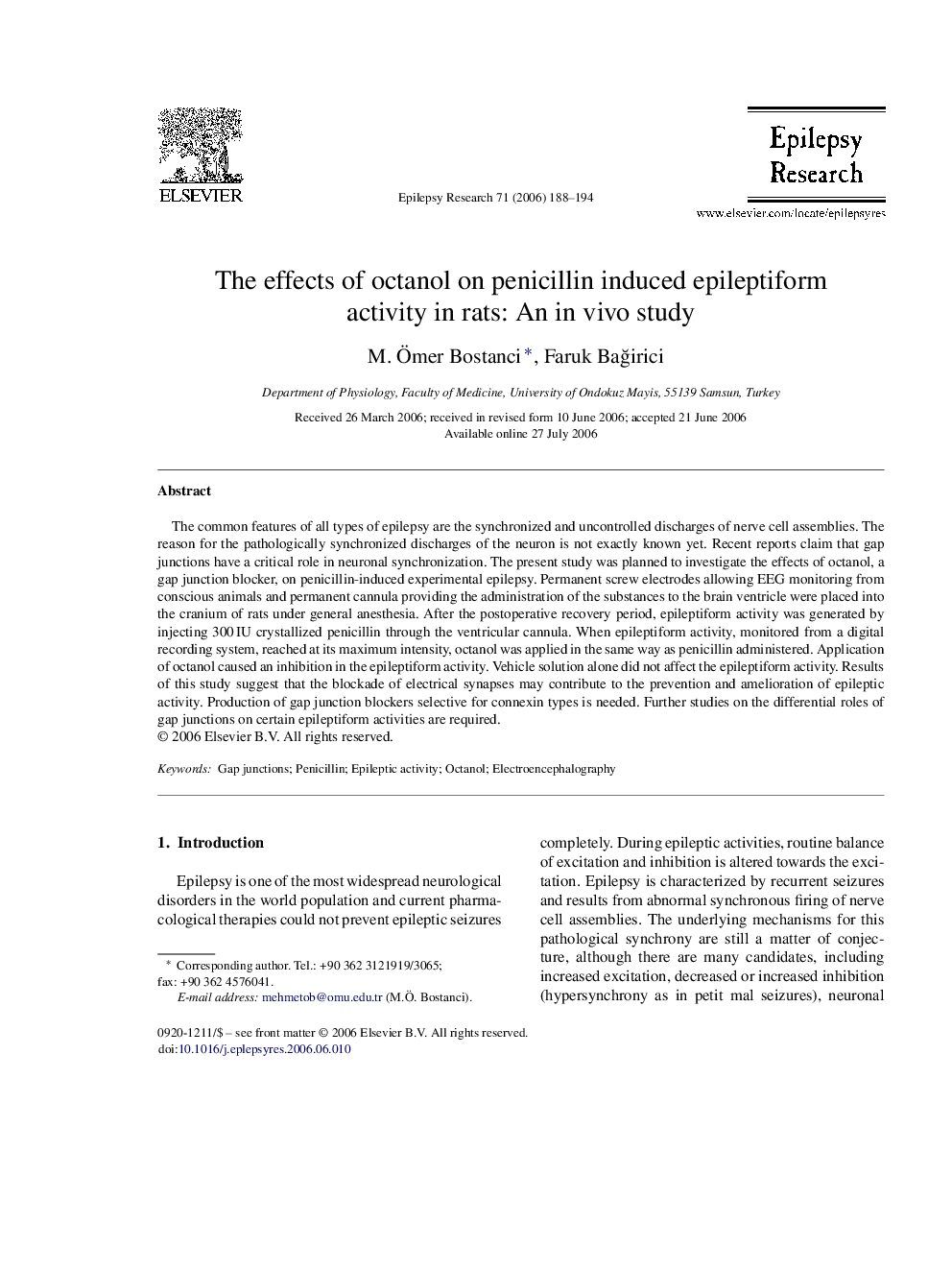| Article ID | Journal | Published Year | Pages | File Type |
|---|---|---|---|---|
| 3053260 | Epilepsy Research | 2006 | 7 Pages |
The common features of all types of epilepsy are the synchronized and uncontrolled discharges of nerve cell assemblies. The reason for the pathologically synchronized discharges of the neuron is not exactly known yet. Recent reports claim that gap junctions have a critical role in neuronal synchronization. The present study was planned to investigate the effects of octanol, a gap junction blocker, on penicillin-induced experimental epilepsy. Permanent screw electrodes allowing EEG monitoring from conscious animals and permanent cannula providing the administration of the substances to the brain ventricle were placed into the cranium of rats under general anesthesia. After the postoperative recovery period, epileptiform activity was generated by injecting 300 IU crystallized penicillin through the ventricular cannula. When epileptiform activity, monitored from a digital recording system, reached at its maximum intensity, octanol was applied in the same way as penicillin administered. Application of octanol caused an inhibition in the epileptiform activity. Vehicle solution alone did not affect the epileptiform activity. Results of this study suggest that the blockade of electrical synapses may contribute to the prevention and amelioration of epileptic activity. Production of gap junction blockers selective for connexin types is needed. Further studies on the differential roles of gap junctions on certain epileptiform activities are required.
